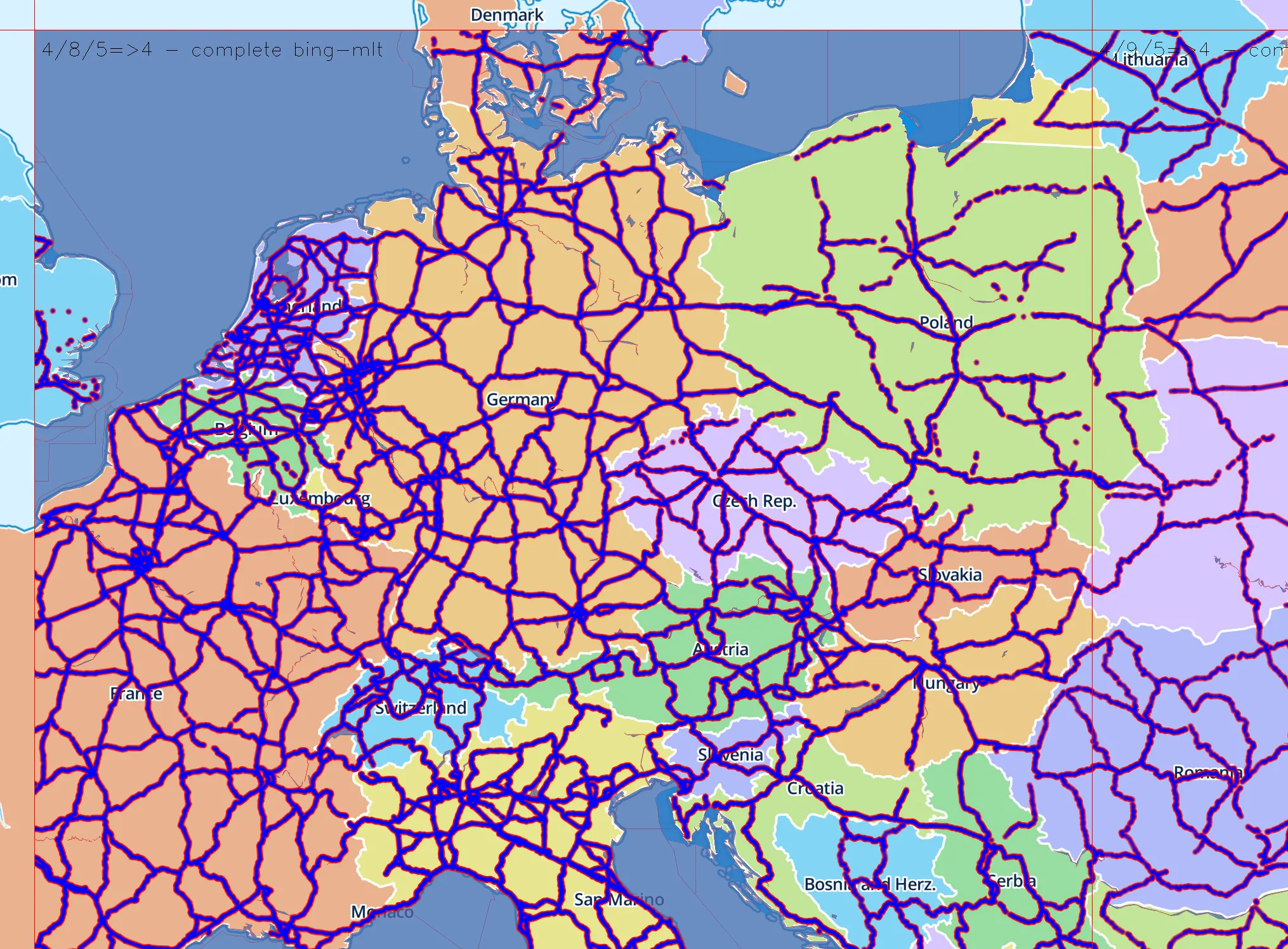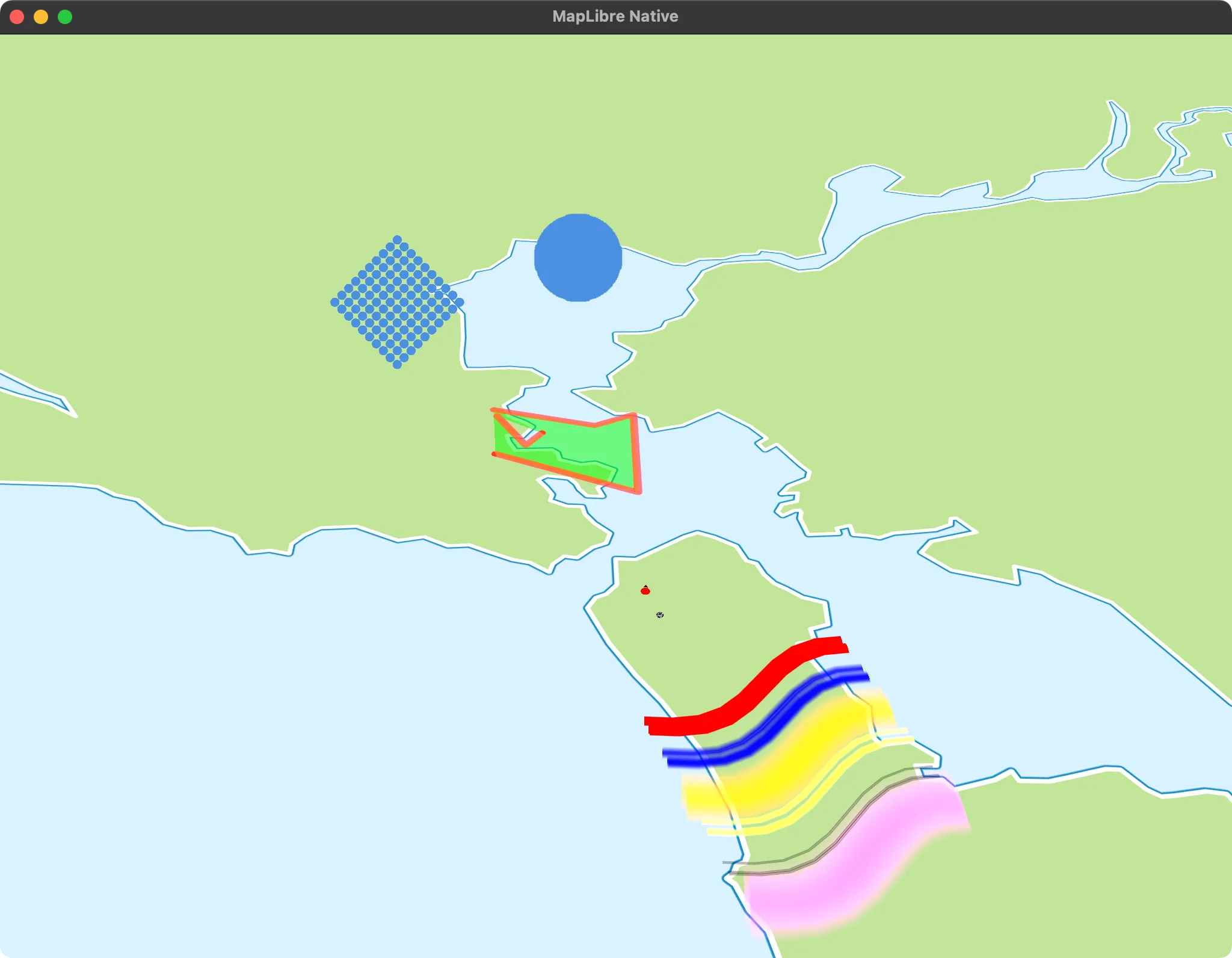Mar 3, 2025
We’re excited to share key updates across MapLibre Native, GL JS, Flutter, and the MapLibre Tile Specification (MLT), along with details on upcoming community meetings.
A huge thank you to everyone who supports MapLibre through GitHub Sponsors and OpenCollective platforms 🎉. Through these channels, we received $4,644.23 in 2023, and in 2024, contributions grew by 24.3% to $5,772.77 USD. Your support is essential in sustaining and expanding our open-source ecosystem - we truly appreciate it!
We’ve also published the Q4 2024 Financial Report, providing insights into our funding and expenditures. You can read the full report here.
With that note of gratitude, here’s the February 2025 round-up.
MapLibre Native
-
Implementation of the new MapLibre Tiles format is in full swing. There is a PR in the
maplibre/maplibre-tile-specrepo with a C++ reader implementation and a draft PR for the integration into MapLibre Native.Even though development has only recently started, this proof-of-concept can already use MLTs (MapLibre Tiles) as a source alongside MVTs.

Screenshot showing the road network in Europe from some demo MLTs based on Bing Maps data.
-
MapLibre iOS 6.11.0 is now available.
- Custom Style Layers, allow drawing directly on the map using the Metal API with full Swift compatibility. Learn more in this guide.
-
Looking ahead, the upcoming MapLibre iOS 6.12.0 release will expose some low-level events for better observability. More details can be found in this article.
-
Custom Drawable Layers allow drawing on the map in a platform-independent way. Currently C++ is required to implement these layers. This month a significant PR was merged, introducing several improvements, including:
- enhanced functionality and improvements to custom drawable layer,
- support for uploading 3D geometries, expanding rendering possibilities.

Custom Drawable Layer demo available in the GLFW app if you press ‘V’.
-
@frankkienl from Flitsmeister has created a sample app demonstrating how to integrate MapLibre with Android Auto (and Automotive). This is a fantastic starting point for developers looking to explore automotive applications. Check out the repository here: MapLibre Android Auto Sample.
Web
February was a shorter month, but we still managed to roll out MapLibre GL JS 5.1.1 with key improvements.
One notable highlight is the powerful addProtocol feature which enabled the release of a new plugin for loading arbitrary fonts using tinySDF:Check out maplibre-local-glyphs, developed by @spatialillusions - a big thanks to their contribution!
This will hopefully pave the way to other font functionality that’s coming in the near future. Stay tuned for further developments 🗺️.
MapLibre Flutter
Version 0.2.1 of flutter-maplibre got released this month. Key feature of this release is the possibility of synchronous controller calls on android due to the exciting release of Flutter 3.29. This is a big milestone to seamlessly display and position Flutter widgets on top of the map. Check out the changelog for the full list of improvements.
Work is also progressing on iOS support, with completion expected by March 2025. Stay tuned!
Feature Previews
Demo showcasing Flutter widgets rendered on top of the map view.
Preview of upcoming iOS support for flutter-maplibre.
MapLibre Tile Format (MLT)
Exciting progress continues on the MapLibre Tile (MLT) format!
- C++ MLT Decoder Implementation: As mentioned before, @TimSylvester has been actively working on a C++ decoder implementation for MLT. Checkout the ongoing work in this PR.
- Rust based FastPFOR algorithm: @jjcfrancisco and @nyurik have published a Rust implementation of the FastPFOR algorithm - which serves as the foundation of the MLT format.
A dedicated meeting for MLT development updates takes place every second Monday of the month at 3:15 PM UTC. The next meeting is scheduled for March 10, 2025.
For ongoing updates, discussions, and collaboration, follow the #maplibre-tile-format Slack channel.
🌟 Community Spotlight: Mapping Historical New York with Vector Beeswarm Dot Density
The team at Stamen has introduced a fascinating mapping project using maplibre-gl-js, that visualizes historical New York using Vector Beeswarm Dot Density techniques. This approach beautifully showcases how data can be represented in a spatially meaningful and visually engaging way.
Read more about the project here: Vector Beeswarm Dot Density with Mapping Historical New York

📢 Have a cool MapLibre-powered project to share? Let us know - we’d love to feature it in our next newsletter! A huge thank you to Tobias Jordans for inspiring this Community Spotlight section. We appreciate the idea and look forward to featuring more exciting projects from the community!
Monthly meetings
We’re continuing our tradition of meeting on the second Wednesday of each month, and now we’re adding an additional session on the last Wednesday to accommodate eastern-friendly time zones.
- MapLibre Navigation: March 12, 2025 5:00–6:00 PM UTC
- MapLibre Native: March 12, 2025 6:00–7:00 PM UTC
- MapLibre GL JS: March 12, 2025 - 7:00–8:00 PM UTC
MapLibre Eastern Call (held on the last Wednesday of the month at an Asia/Oceania-friendly time)
- March 26, 2025 - 9:00–10:00 AM UTC
View meeting times in your time zone: https://notime.zone/OKPWfUR_vx2eP.
All calls are open to everyone. Zoom links can be found in our MapLibre Slack. If you’re not a member, request an invite at OpenStreetMap US Slack community. We look forward to seeing you!